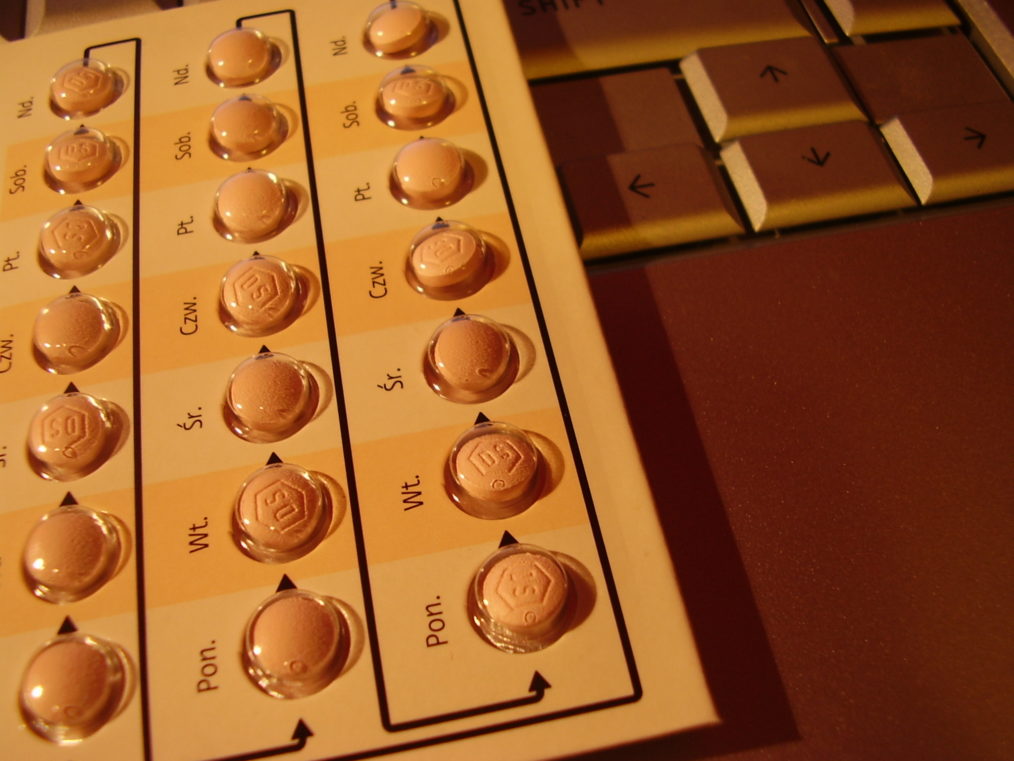
Psychology and the pill:
A lesson learnt
Not long ago I completed a study on the effects of a single light-therapy session on mood in young adult women during their premenstrual phase. The data analyses indicated no significant effects compared to a placebo intervention. Boohoo, a null finding. Yet I thought it should be published; I wanted to communicate that light therapy may be no better than placebo when expectations about the two treatments are similar. (Thanks to its novel design, this was the case in our study, unlike in many previous studies when participants often knew when they were getting light therapy and when a placebo).
The editor of the first journal rejected the paper without sending it out for peer review. The editors of three subsequent journals did the same. I then submitted the paper to Psychiatry Research and after nearly four months received a request to revise and resubmit. This was about a year after submitting the paper to the first journal.
“I am often quite pleased with the comments of reviewers”
Have you heard of the Reviewer 2 must be stopped movement? Many researchers support it, thereby challenging the current peer review system. This system certainly has flaws, but I am often quite pleased with the comments of reviewers. Formulating a response generally helps me to improve the paper and I am usually more satisfied with the revised and published version than with the original submission.
In the case of our light therapy paper, Reviewer 2 commented that the study impact was limited because most participants were taking hormonal birth-control medication; the lack of effect of light therapy might be explained by “the pill” acting as a mood stabilizer (Jarva & Oinonen, 2007). In response, I examined whether the effects of light therapy on mood were different in pill users versus non-users.
“the light-therapy session selectively improved mood in the women who did not use the pill”
My colleagues and I were very excited when we learnt that this was indeed the case! We revised the paper and concluded that the light-therapy session selectively improved mood in the women who did not use the pill, a finding that was published earlier this year (aan het Rot, Miloserdov, Buijze, Meesters, & Gordijn, 2017). We were very happy to be able to acknowledge the anonymous reviewer who, I think, helped in getting the study published.
The comment by Reviewer 2 proved a valuable lesson. Even more so because until this comment I had failed to recall a conversation I had with a PhD student in Leiden before the first submission of the paper. She had just published a paper showing differences between pill users and non-users in the ability to recognize emotions from facial expressions (Hamstra, De Rover, De Rijk, & Van der Does, 2015) and brought up the fact that pill use is hardly ever considered in studies on emotional information processing and related phenomena. We agreed that psychology might be neglecting an important confounder.
“psychology might be neglecting an important confounder”
Given the widespread use of hormonal contraceptives among women of reproductive age, the low number of studies examining their psychological effects is surprising. Most studies have compared pill users and non-users (e.g., Hamstra et al., 2015; Jarva & Oinonen, 2007) who may have differed on more than just pill use. To overcome this limitation, some recent studies assessed the same women before and after starting contraceptives (e.g., Lisofsky, Riediger, Gallinat, Lindenberger, & Kühn, 2016). The few experimental studies I could find all involved repeated administration of the pill or a placebo (e.g., Engman et al., 2017; Lundin et al., 2017) and thus focused on longer-term effects. Single-dose placebo-controlled studies on the acute effects of female sex hormones are completely lacking!
This was unexpected because there exist multiple experimental studies on the acute effects of testosterone, the primary male sex hormone, on psychological functioning. These include multiple studies in women, which, interestingly, have mostly been conducted in the Netherlands (for a review, see Bos, Panksepp, Bluthé, & Honk, 2012). As usual, it appears there is a need for more research, and hopefully over time there will be an impact on science. As female sex hormones have receptors in the mammalian brain (Vargas et al., 2016), I will be very surprised if the pill is not found to acutely influence psychological functions such as information processing (Sheppard, Koss, Frick, & Choleris, 2017). In the meantime, I propose that pill use should by default be taken into account during data analysis in psychology.
“pill use should by default be taken into account during data analysis”
References:
aan het Rot, M., Miloserdov, K., Buijze, A. L. F., Meesters, Y., & Gordijn, M. C. M. (2017). Premenstrual mood and empathy after a single light therapy session. Psychiatry Research, 256, 212-218. doi:10.1016/j.psychres.2017.06.052
Bos, P. A., Panksepp, J., Bluthé, R.-M., & Honk, J. v. (2012). Acute effects of steroid hormones and neuropeptides on human social–emotional behavior: A review of single administration studies. Frontiers in Neuroendocrinology, 33(1), 17-35. doi:10.1016/j.yfrne.2011.01.002
Engman, J., Sundstrom Poromaa, I., Moby, L., Wikstrom, J., Fredrikson, M., & Gingnell, M. (2017). Hormonal cycle and contraceptive effects on amygdala and salience resting-state networks in women with previous affective side effects on the pill. Neuropsychopharmacology. doi:10.1038/npp.2017.157
Hamstra, D. A., De Rover, M., De Rijk, R. H., & Van der Does, W. (2015). Oral contraceptives may alter the detection of emotions in facial expressions. European Neuropsychopharmacology, 24(11), 1855-1859. doi:10.1016/j.euroneuro.2014.08.015
Jarva, J. A., & Oinonen, K. A. (2007). Do oral contraceptives act as mood stabilizers? Evidence of positive affect stabilization. Archives of Women’s Mental Health, 10(5), 225-234. doi:10.1007/s00737-007-0197-5
Lisofsky, N., Riediger, M., Gallinat, J., Lindenberger, U., & Kühn, S. (2016). Hormonal contraceptive use is associated with neural and affective changes in healthy young women. Neuroimage, 134(Supplement C), 597-606. doi:10.1016/j.neuroimage.2016.04.042
Lundin, C., Danielsson, K. G., Bixo, M., Moby, L., Bengtsdotter, H., Jawad, I., . . . Sundström Poromaa, I. (2017). Combined oral contraceptive use is associated with both improvement and worsening of mood in the different phases of the treatment cycle—A double-blind, placebo-controlled randomized trial. Psychoneuroendocrinology, 76(Supplement C), 135-143. doi:10.1016/j.psyneuen.2016.11.033
Sheppard, P. A. S., Koss, W. A., Frick, K. M., & Choleris, E. (2017). Rapid actions of estrogens and their receptors on memory acquisition and consolidation in females. Journal of Neuroendocrinology. doi:10.1111/jne.12485
Vargas, K. G., Milic, J., Zaciragic, A., Wen, K.-x., Jaspers, L., Nano, J., . . . Franco, O. H. (2016). The functions of estrogen receptor beta in the female brain: A systematic review. Maturitas, 93(Supplement C), 41-57. doi:10.1016/j.maturitas.2016.05.014
Note:
Image by anqa licenced under CC BY 2.0.



